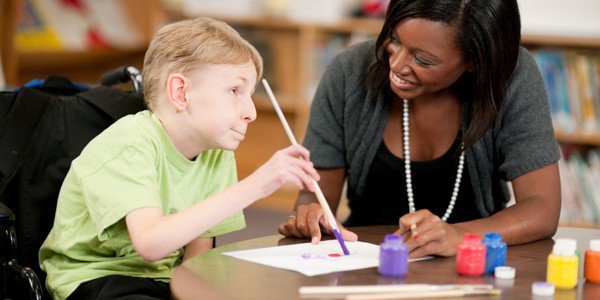Child brain paralysis | causes and treatment

Infantile cerebral palsy (PCI) is the most frequent cause of motor disability in children. When we speak of PCI, we refer to a group of non-progressive alterations in movement and posture that limit activity, due to a brain injury that occurred during the brain development of the fetus or the young child (which may occur in pregnancy, delivery or during the first years of life). Motor disorders are frequently accompanied by sensory, perceptual, cognitive, communication, epilepsy and / or secondary musculoskeletal problems.
The frequency with which these other alterations coexist is variable. Approximately
Epilepsy
45%
Prenatal or congenital
35%
Perinatal
55%
Postnatal
10%
Cognitive
50%
Auditory
12%
Of language or speech
38%
Ophthalmological
12%
The most frequent cause of infantile cerebral palsy is the deficit of blood supply to a developing brain due to hemorrhage, inflammation or stroke. The causes are very diverse not knowing each other with certainty in many occasions (in 40% the origin is unknown, being able to be malformations, brain injuries that occur during fetal life due to infection or lack of oxygen and blood supply, problems of childbirth and injuries or postnatal accidents secondary to meningitis, encephalitis, traffic accidents, drowning, etc.)
By definition, the lesion is stable (not progressive) and the disorders are persistent but change with age. The manifestations of Infantile Cerebral Palsy depend on the extent and location of the brain lesion, as well as the ability of the brain to adapt to it. The growing knowledge of the mechanisms of cerebral plasticity is in line with the idea that neurodevelopment continues for life and has enhanced the importance of an intensive and specialized Rehabilitation treatment in patients with Cerebral Palsy in Children. In recent years the prognosis has improved thanks to new tools and therapeutic approaches.
Disorders of postural fixation
Failures in the suppression of archaic reflexes
Paresis, paralysis or disorders in voluntary motor patterns
Spasticity and other muscle tone disorders
Involuntary movements
Failures in the development of balance control and postural control
The first clinical signs appear at any time between birth and three years. Some early signs (before 3-4 months) that can make you suspect an alteration are:
Alterations in swallowing and oromotor skills of the newborn
Absence of spontaneous movements at 2-4 months
Absence of a social smile at 3 months
Absence of eye tracking at 3 months
Complete absence of cephalic support at 3 months
Important aipotonia
Spasms or severe stiffness
Clear preference for moving a part of the body.

There are several classifications depending on the topography (the parts of the body affected at the motor level), the neuropathology (the injured brain structures), or the predominant changes in tone and movement (flaccid, spastic, dystonic, rigid ...). Currently the objective of the classification is descriptive and also functional and should be added to the motor disorder, if any, any of the accompanying alterations described. Generally it is classified:
According to the part of the affected body: hemiplegia, diplegia, tetraplegia, monoplegia, triplegia.
According to the alteration of the tone and / or movements: spastic (the most frequent: 80%), ataxic, dystonic or mixed.
SPASTIC CEREBRAL PARALYSIS
Spasticity means rigidity; People who have this kind of cerebral palsy find it difficult to control some or all of their muscles, which tend to stretch and weaken, and which are often those that hold their arms, legs or head. Spastic cerebral palsy usually occurs when nerve cells in the outer layer of the brain or cortex do not function properly. It occurs in a percentage of 60-70% of people with cerebral palsy.
DISQUINETIC OR ATETOID CEREBRAL PARALYSIS
It is characterized, mainly, by slow, involuntary movements (aggravated by fatigue and emotions and attenuated at rest, disappearing with sleep) and uncoordinated, which hinder voluntary activity. It is common for people with this type of cerebral palsy to have muscles that change rapidly from loose to tight. Your arms and legs move in an uncontrolled way, and it can be difficult to understand them because they have difficulty controlling their tongue, breathing and vocal cords. Athetoid cerebral palsy is the result of the central part of the brain not functioning properly.
ATÁXIC CEREBRAL PARALYSIS
People with ataxic cerebral palsy have difficulty controlling balance due to a lexion in the cerebellum. Depending on the scope of the lexion, these people can walk, although they will do so in an unstable manner.
MIXED CEREBRAL PARALYSIS
Mixed cerebral palsy occurs when the brain presents lexions in several of its structures, so that, in general, the characteristics of the different types will not be manifested in their pure forms, but combinations will exist. We can also differentiate cerebral palsy according to the part of the body that is affected, thus having a classification by topographic criteria.
HEMIPLEGIA
Occurs when the disability occurs only in the left or right half of the body
PARAPLEGIA
Affectation especially of Lower Members
TETRAPEGIA
The two arms and the two legs are affected
DISPLEGIA
It affects both legs, being the arms nothing or slightly affected
MONOPLEGIA
Only one member of the body is affected
Finally, depending on the severity with which cerebral palsy manifests, we can divide it into:
BRAIN CEREBRAL PARALYSIS
It occurs when the person is not limited in the activities of daily life, although it presents some physical alteration.
MODERATE CEREBRAL PARALYSIS
In this case the individual has difficulties in carrying out daily activities and needs means of assistance or support.
SEVERE CEREBRAL PARALYSIS
The person requires support for practically all activities of daily life.